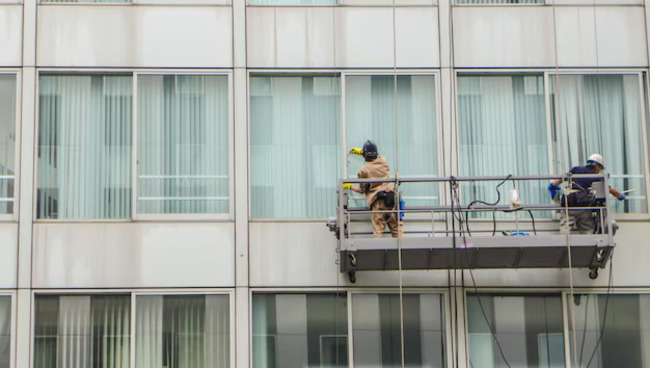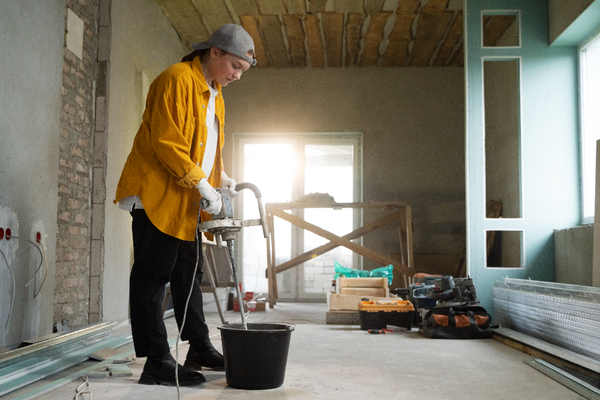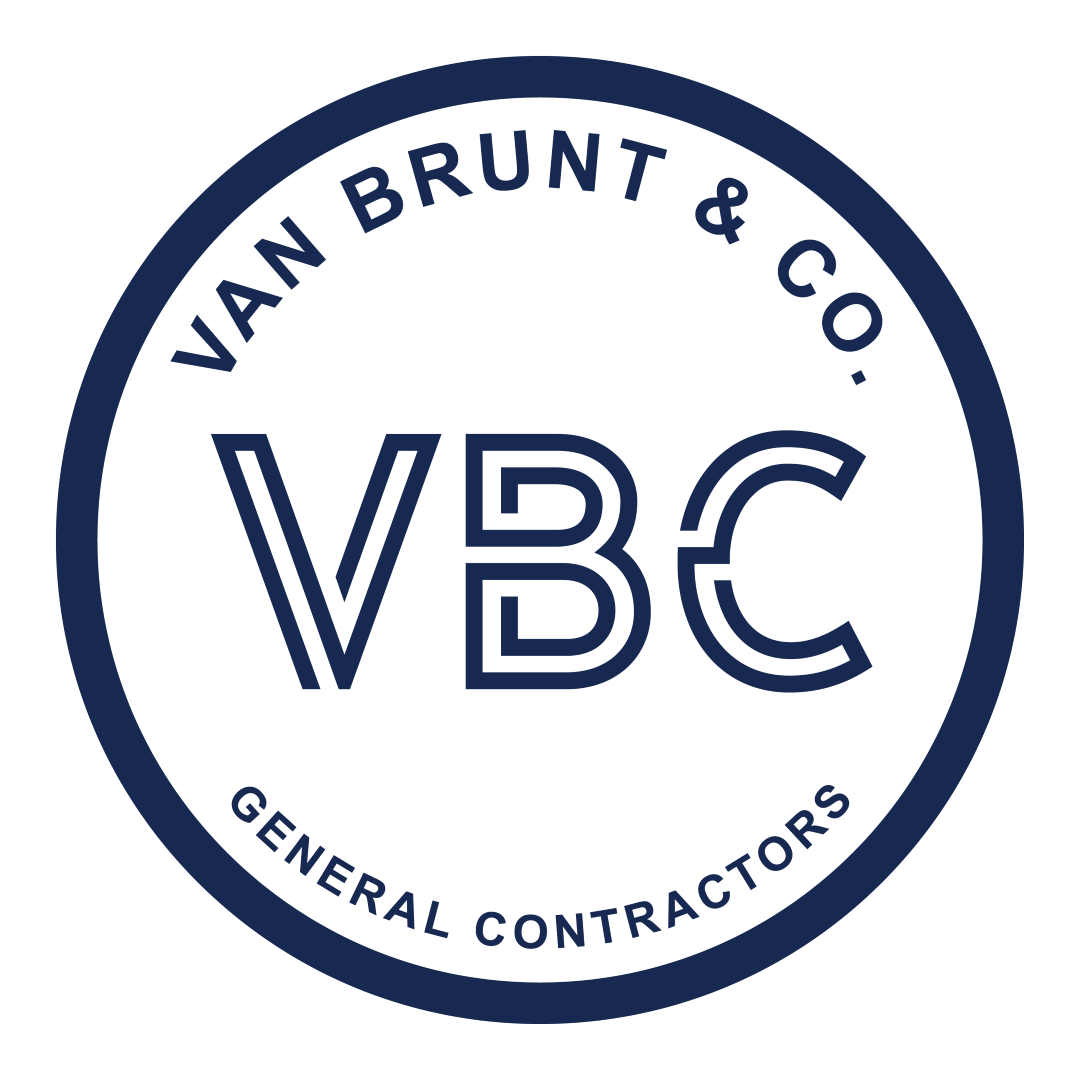Commercial building remediation is about restoring a safe, secure, and healthy environment after a disaster impacts your property. This process can include removing hazardous materials, decontaminating spaces, and addressing structural damage caused by events like fires, floods, or storms. Remediation ensures that your commercial building remains functional and safe for everyone who depends on it, from employees to visitors.
At Van Brunt & Company, we understand the urgency of commercial restoration, offering services to help you when disaster strikes. With decades of experience, we provide tailored solutions to handle the common challenges that arise during remediation. From addressing hidden damage to implementing long-lasting repairs, we are here to guide you through every step of the restoration process.

Essential Strategies for Maintaining Commercial Building Health
Your commercial space deserves the care and attention needed to keep it safe, functional, and inviting. Whether it’s tackling mold, addressing water damage, or improving air quality, proactive maintenance makes all the difference in creating a healthy environment for everyone inside. By taking thoughtful steps, you not only protect your investment but also foster a space where people can thrive and feel supported.
Preventing and Addressing Mold in Commercial Buildings
Mold is a frequent issue in commercial buildings, especially after water or flood damage. Beyond being unsightly, it poses significant health risks, such as respiratory problems and allergic reactions.
To effectively manage mold, follow these proactive steps:
- Regularly inspect building surfaces for signs of mold growth.
- Maintain low moisture levels by addressing leaks or humidity issues promptly.
- Use mold-specific cleaners to clean affected areas thoroughly.
- Ensure proper ventilation to discourage mold development.
Taking these measures not only improves air quality but also protects the well-being of building occupants. If your property has experienced water damage, acting quickly to mitigate mold is essential to maintaining a healthy and safe environment.
Responding to Structural Damage in Commercial Buildings
Structural damage in commercial buildings often results from natural disasters like floods, fires, and earthquakes. Identifying and repairing these issues quickly is critical to ensure the safety of occupants and prevent further complications.
When dealing with structural damage, consider these essential actions:
- Inspect the building thoroughly for visible signs of damage, such as cracks or shifts.
- Address repairs immediately to avoid worsening the situation.
- Work with trusted professionals who understand building codes and safety standards.
- Be prepared with a 24-hour emergency response plan for natural disasters.
Prompt and professional repairs ensure the longevity and safety of your building. With expert assistance, you can restore your property efficiently, minimizing downtime and future risks.
Managing Water Damage to Protect Commercial Buildings
Water damage is one of the most common issues commercial buildings face, often leading to costly repairs if not addressed promptly. From plumbing leaks to floods, water damage can weaken structures and create a breeding ground for mold.
To minimize the impact of water damage, follow these practical steps:
- Identify and repair leaks or plumbing issues as soon as they arise.
- Ensure proper drainage systems are in place to handle heavy rain or flooding.
- Use water-resistant materials in high-risk areas to mitigate future damage.
- Conduct routine inspections of roofs, basements, and walls for signs of water intrusion.
Acting swiftly after detecting water damage can save time, money, and the integrity of your building. By staying proactive, you ensure a safer environment and prevent long-term complications caused by water-related issues.
Improving Indoor Air Quality in Commercial Spaces
Indoor air quality is often overlooked but plays a crucial role in maintaining a healthy and comfortable commercial environment. Poor air quality can impact employee productivity, tenant satisfaction, and overall building operations.
Boost indoor air quality with these straightforward measures:
- Install and maintain high-quality air filtration systems.
- Regularly clean HVAC systems to prevent dust and debris buildup.
- Monitor humidity levels to avoid moisture-related problems like mold.
- Ensure adequate ventilation in all areas of the building.
Prioritizing air quality promotes a healthier workspace and enhances occupant satisfaction. With proper maintenance and upgrades, you can create a clean and welcoming atmosphere for everyone who enters your building.

Common Commercial Building Remediation Solutions
Restoring your commercial building after a disaster isn’t just about fixing damage; it’s about creating a safer, stronger, and more efficient space for the future. Whether it’s inspecting for hidden issues, implementing energy-efficient upgrades, or preparing for future challenges, every step you take matters. With the right strategies and a proactive mindset, you can rebuild with confidence and set your building up for long-term success.
Inspection and Testing to Identify Post-Disaster Concerns
After a disaster, the first step in restoring your commercial building is a detailed inspection and testing. This helps uncover hidden problems and ensures the right solutions are applied with care and precision.
Here’s how to approach inspection and testing effectively
- Walk through the building to identify areas with visible damage or weaknesses
- Test for mold, water damage, and compromised materials to prevent future risks
- Document everything to create a clear plan for addressing the damage
- Collaborate with experienced professionals to assess the extent of repairs needed
By starting with a thorough inspection, you can feel confident that no issue is overlooked. Addressing these concerns early sets the stage for a smooth and successful restoration process.
Repairs and Restoration to Rebuild with Confidence
Once the damage has been identified, it’s time to restore your building and make it safe and welcoming again. Repairs and restoration focus on fixing what’s broken while improving the space’s overall appearance and functionality.
Key steps in the restoration process include
- Replacing damaged walls, floors, and ceilings to regain structural integrity
- Repairing electrical, plumbing, and HVAC systems to ensure safety and efficiency
- Adding fresh finishes like painting and flooring for a polished look
- Using expert restoration services for complex repairs or full-scale rebuilds
Taking the time to restore your building with care ensures it will be ready to serve its purpose again. With the right team on your side, you can rebuild in a way that feels seamless and worry-free.
Regular Maintenance to Protect Your Investment
After restoring your building, keeping up with regular maintenance is key to ensuring its long-term resilience. Small efforts over time can prevent big issues and keep the space safe and functional for everyone.
To maintain your building effectively, try these tips
- Schedule routine inspections to catch small problems before they escalate
- Clean and maintain key areas to keep the space looking and feeling great
- Monitor important systems like HVAC and plumbing to avoid unexpected breakdowns
- Keep detailed maintenance records to track what’s been done and what’s next
By staying proactive, you’re not just protecting your building but also creating peace of mind. Regular care shows your commitment to maintaining a safe and welcoming space for everyone who uses it.
Establishing an Emergency Response Plan for Future Events
Disasters are unpredictable, but having a response plan ensures your team is prepared to act quickly. A well-thought-out plan minimizes downtime and helps protect your building and its occupants during emergencies.
Here are key elements to include in an emergency response plan
- Designate a team responsible for disaster response and communication
- Maintain a list of emergency contacts, including restoration professionals
- Create evacuation routes and drills for all building occupants
- Keep a supply of emergency tools and materials for quick fixes
Being prepared gives you peace of mind and helps reduce chaos during unexpected situations. A solid emergency plan ensures that your commercial building is ready to handle challenges with confidence and efficiency.
Improving Energy Efficiency During Restoration
Restoration is a great opportunity to upgrade your building’s energy efficiency, which can lower costs and enhance sustainability. Simple changes during repairs can lead to long-term benefits for your property and its occupants.
Here’s how to make energy-efficient improvements
- Replace old windows with energy-efficient ones to reduce heat loss
- Upgrade to LED lighting for lower energy consumption and longer lifespan
- Install modern HVAC systems for better temperature control and efficiency
- Use insulation materials to enhance heating and cooling performance
Focusing on energy efficiency during restoration not only saves money but also shows your commitment to sustainability. With these upgrades, your building becomes more cost-effective and environmentally friendly in the long run.
Conclusion
Restoring a commercial building after a disaster is an opportunity to create a space that is safer, healthier, and better prepared for the future. By addressing key issues like structural damage, water intrusion, and indoor air quality, you not only rebuild but also enhance the functionality and resilience of your property. Taking thoughtful steps now ensures a stronger foundation for years to come.
Consistency and proactive maintenance are just as vital as the restoration process itself. From regular inspections to implementing an emergency response plan, every measure contributes to the longevity and safety of your building. With a clear strategy and professional support, you can confidently protect your investment and provide a safe, welcoming environment for everyone who relies on your space.
Frequently Asked Questions
How can I prevent secondary damage after a disaster?
Secondary damage, such as mold or structural issues, can be avoided by addressing the initial damage quickly. Ensure proper ventilation, remove excess water, and consult professionals for a thorough inspection to identify hidden problems.
What are the most common mistakes to avoid during remediation?
Delaying repairs, ignoring small issues, or choosing unqualified contractors can lead to bigger problems. Acting promptly and working with experienced professionals ensures that your remediation process is efficient and long-lasting.
How often should I schedule maintenance for my commercial building?
Regular maintenance should be scheduled quarterly or semi-annually, depending on the building’s size and use. Routine inspections of systems like HVAC, plumbing, and roofing help prevent costly repairs and keep your building safe.
What should I do if my building is partially operational during restoration?
Prioritize safety by sectioning off damaged areas and clearly marking hazards. Coordinate with your restoration team to minimize disruptions while ensuring that unaffected areas remain fully functional for occupants.
Can restoration improve my building’s value?
Yes, a well-executed restoration can significantly increase your property’s value. Upgrades like energy-efficient systems, modern finishes, and enhanced safety features make your building more appealing to tenants and buyers.

